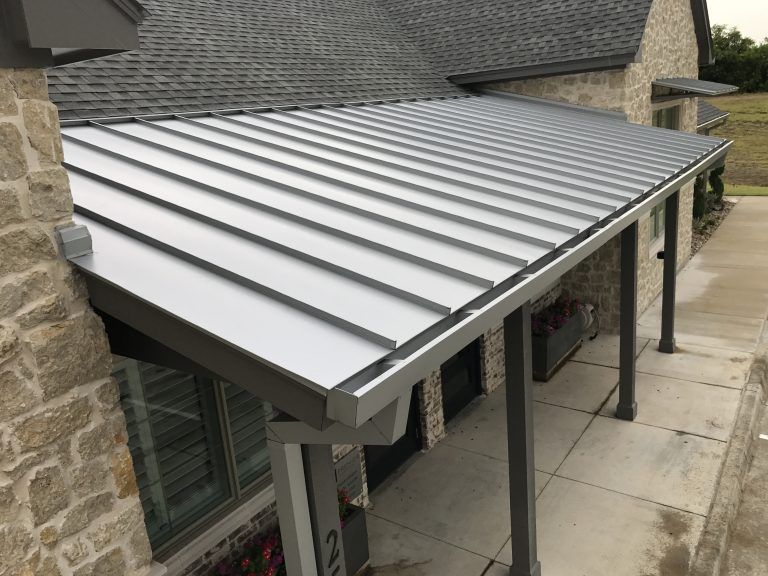Home tours are an exciting part of the homebuying journey, offering a glimpse into what could be your future living space. However, it’s easy to get swept away by stylish staging and fresh paint. These cosmetic touches can sometimes conceal deeper issues. What looks like a dream home on the surface may hide costly problems beneath. That’s why it’s crucial for buyers to stay alert and watch for red flags during property visits. Spotting these warning signs early can help you avoid unexpected expenses and make a more informed decision.
Warning signs for homebuyers during property tour
A property tour is more than just admiring layout and décor. It’s your chance to spot hidden issues that could lead to major expenses down the road. Here are some common red flags to watch for during your visit.
1. Signs of water damage
Water damage is one of the most expensive issues to repair, and unfortunately, it’s often hidden behind cosmetic fixes. During the tour, look closely at ceilings, walls, and floors for discoloration, stains, or bubbling paint as these may indicate past or ongoing leaks. A musty smell can signal mold or mildew, especially in basements, bathrooms, or closets. Check under sinks and around windows for moisture marks, and don’t ignore warped wood or sagging spots in the flooring. These subtle signs may point to plumbing issues, roof leaks, or drainage problems that need professional evaluation.

2. Foundation and structural issues
A solid foundation is essential for a safe and long-lasting home. During the tour, pay close attention to any visible cracks in the walls, especially near doors, windows, or the corners of rooms. While minor hairline cracks can be harmless, larger or widening cracks could signal foundational movement. Uneven or sloping floors, sticking doors or windows, and gaps between walls and ceilings are also cause for concern. Outside the home, inspect the base for visible cracks or crumbling sections. Structural issues can be costly to repair and may affect the home’s long-term stability and resale value.

3. Roofing problems
The roof is your home’s first line of defense against the elements, and repairing or replacing it can be a major expense. During the tour, take note of any visible sagging, uneven sections, or patched areas on the roof. From the ground, look for missing, curled, or cracked shingles. Inside the home, check the ceilings, especially in upper-floor rooms and the attic, for water stains or signs of past leaks. A well-maintained roof should also have proper drainage systems, like clean and securely attached gutters. Any sign of damage may indicate deferred maintenance or hidden water issues.

4. Poor ventilation and natural light
A home with poor ventilation can feel stuffy, retain moisture, and even encourage mold growth over time. During the tour, notice if certain rooms feel unusually warm, humid, or lack fresh airflow. Bathrooms and kitchens should have exhaust fans or windows to allow moisture to escape. Also, check for condensation on windows or a lingering damp smell, which can point to inadequate air circulation. Natural light is equally important as it affects your mood, energy use, and overall comfort. Take note of how much daylight each room receives. If the home feels dark even on a sunny day, it may mean small or poorly placed windows, which can lead to higher electricity bills and a less inviting atmosphere.

5. Electrical concerns
Outdated or faulty electrical systems can pose serious safety risks and lead to expensive repairs. While touring the home, test light switches and outlets to ensure they work properly. Flickering lights, buzzing sounds, or warm outlets may signal underlying wiring problems. Look for exposed wires, overloaded extension cords, or an unusually high number of power strips, which could indicate a lack of proper outlets. Check the electrical panel, if accessible. It should be well-labeled, clean, and up to modern safety standards. An old fuse box or a messy panel might mean the system hasn’t been upgraded in decades. If anything seems off, a licensed electrician should inspect the setup before you proceed.

6. Plumbing red flags
Plumbing issues can lead to water damage, mould growth, and costly repairs if not addressed early. During your tour, test faucets, showers, and toilets to check for adequate water pressure and proper drainage. If the water is slow to drain or there are gurgling sounds from sinks or toilets, it could indicate a clogged or aging plumbing system. Look under sinks and around the base of fixtures for signs of leaks, rust, or water stains. A persistent sewage or musty odour in bathrooms or kitchens is another warning sign of plumbing trouble. Also, take note of any unusually low water flow, which may suggest pipe corrosion or mineral buildup.

7. Signs of pest infestation
Unwanted pests like termites, rodents, or cockroaches can cause serious damage and health risks if left unchecked. While touring the home, look for small holes in walls or baseboards, chewed wires, or wood that sounds hollow when tapped as these can be signs of termite activity. Droppings, dead insects, or nests tucked away in corners, cabinets, or basements are strong indicators of a pest problem. Be alert to any strange or unpleasant odours, especially a musky or ammonia-like smell, which can signal rodent urine. Also, check window sills and door frames for insect trails or mud tubes, which are common signs of a termite infestation. A clean home doesn’t always mean it’s pest-free, so trust your senses and don’t hesitate to ask about previous pest control treatments.

8. Strange renovation choices or over-staging
Sometimes, what looks like a recent upgrade may actually be a rushed fix to hide deeper issues. Be cautious of oddly placed tiles, mismatched flooring, or a single freshly painted wall as these can signal attempts to cover water damage, cracks, or mould. If a room feels oddly designed or features seem out of place, it could indicate DIY renovations that weren’t professionally executed. Over-staging is another tactic that can distract from flaws. Oversized furniture might be used to hide stains or damaged flooring, while rugs could be covering cracks or warping. While staging helps you visualise the space, don’t let it prevent you from inspecting every corner. Look beyond the surface and ask questions about any renovations or recent repairs.
9. Neighbourhood and exterior concerns
The condition of the home’s exterior and the surrounding neighbourhood can reveal a lot about what living there might be like. During your visit, inspect the outer walls, driveway, fencing, and landscaping for signs of neglect, such as peeling paint, cracks, broken gates, or overgrown plants. Drainage issues like standing water near the foundation or in the yard may indicate poor grading, which can lead to flooding or structural damage. Also, take a moment to observe the surrounding area. Are nearby homes well-maintained, or do they show signs of disrepair? Excessive noise, heavy traffic, or a lack of street lighting can affect your comfort and security. A home may check all your boxes inside, but the neighbourhood plays a critical role in long-term satisfaction.
10. Seller or agent avoiding questions
Transparency is key when buying a home, and reluctance to answer reasonable questions should raise a red flag. If the seller or real estate agent seems evasive, gives vague responses, or changes the subject when asked about the property’s history, repairs, or disclosures, it could indicate that they’re hiding something. Pay attention to how open they are to a thorough inspection or follow-up visits. A rushed tour or resistance to independent evaluations might signal underlying issues they don’t want discovered. Always trust your instincts. If you’re not getting clear answers, it’s worth proceeding with caution or seeking professional advice before making any commitments.
Housing.com POV
Buying a home isn’t just about falling in love with a space. It’s about making a sound, long-term investment in your future. A fresh coat of paint or stylish interiors shouldn’t distract you from signs of hidden trouble. Countless buyers overlook small red flags during a property tour, only to face costly surprises months later. That’s why it’s recommended for every buyer to enter a home tour with a sharp eye and a healthy dose of curiosity. Don’t hesitate to look beyond the obvious- open cabinets, test fixtures and inspect corners. Ask tough questions. A beautiful home should stand up to scrutiny. Most importantly, trust the process. With the right guidance and a little diligence, you can spot potential issues early and negotiate with confidence.
FAQs
Should I bring someone with me to a home tour?
Yes, it’s helpful to bring a trusted friend, family member, or even a contractor. They might spot issues you miss and provide a second opinion, especially if you're emotionally invested in the property.
Can strong air fresheners or scented candles be a red flag?
Yes. Overpowering scents may be used to mask unpleasant odours like mildew, pet damage, or sewage issues. Always ask to revisit the home without the artificial fragrances if you're unsure.
How many times should I tour a home before making an offer?
Ideally, tour the property at least twice. Once to get a feel for the space and again to inspect it more critically. If possible, visit at different times of day to assess lighting and noise levels.
Is it okay to take photos or videos during the tour?
Yes, with the seller or agent’s permission, capturing photos or videos can help you remember details and compare properties later. It’s especially useful for noting concerns or questions to follow up on.
What if the home looks great but feels “off”?
Trust your instincts. A home might be visually perfect but still give you a bad gut feeling. That could stem from layout, location, or something less tangible. Don’t ignore it. Ask more questions or consult an expert.
| Got any questions or point of view on our article? We would love to hear from you. Write to our Editor-in-Chief Jhumur Ghosh at jhumur.ghosh1@housing.com |







